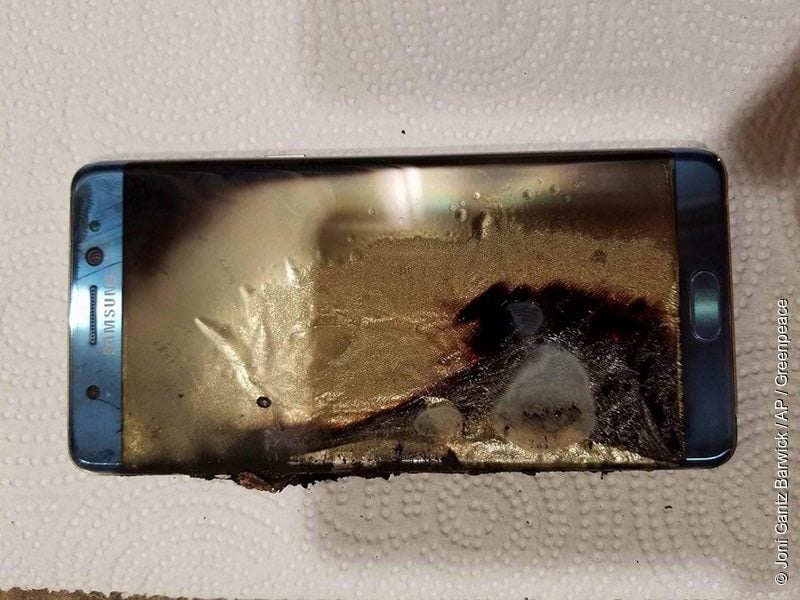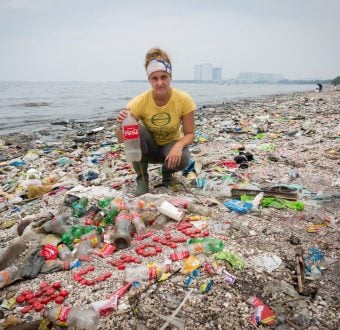
A damaged Samsung Galaxy Note 7, in Marion, Illinois, belonging to Joni Gantz Barwick, who was woken up at 3 a.m. on September 8th, by smoke and sparks from her Galaxy Note 7.
Analysts are watching like hawks for how Samsung will win back the trust of its customers and investors. Yet the mountain of now defunct Note 7’s is an equally serious issue, and one that holds valuable lessons for Silicon Valley.
So far Samsung has been evasive about plans for the handsets, stating under pressure that it was ”reviewing possible options that can minimize the environmental impact of the recall”. One option that must be taken off the table is the approach the company took in 1995: after finding a defect in its Anycall phones, it literally burnt the faulty handsets. It’s easy to believe that burning, or incinerating as it’s known, makes waste disappear but that’s not the case. During the burning process, incinerators can release toxic pollution into the air and even create new, highly poisonous, toxins that weren’t in the original products to start with. The waste is converted into ash, which still has to go to landfill. Burning 4.3 million handsets wouldn’t just be a business crisis but an environmental one too. The option of sending the handsets straight to landfill is just as bad.
The Oeko Institut has calculated the amount of materials contained in all the Note 7’s. One example is gold: those handsets likely contain about 220 pounds of it. To produce that amount of gold, almost 100,000 tonnes of rock, ore and fossil energy had to be excavated. Miners may well have been exposed to highly poisonous mercury and cyanide. Wasting these materials should not be an option. Beloved Bay Area brands like Patagonia and Timbuk2 build brand loyalty by offering take back programs, to first re-use then recycle their products. The recycling process for cellphones is still in its infancy, with much of the original materials still being lost, but Samsung has the unique opportunity to trial new methods at scale, since the recall has given them a vast number of the same product to run tests with.
Samsung hasn’t officially announced any concrete analysis on why the Note 7’s caught fire. Most speculation has pointed to the battery, which was fused to its case to make the slimmest possible phone. In doing so, the handsets were no longer designed to last. This is part of a growing trend for electronics that cannot be repaired or upgraded. The most recent Macbook Pro release for example, marked the end of upgradeable computers from Apple. This is the kind of thinking both Silicon Valley and Samsung need to challenge. Smart product design should include the ability to repair products, reuse the components and recycle the resources, from the beginning. Products should use recycled, non-toxic materials instead of virgin materials. They should be safe and easy to dismantle after being discarded. Recent survey data shows there’s demand for this approach: over 90% of respondents surveyed in a recent global study (with the exception of Germany) said that “designed to last” is an important feature of a new smartphone, and nearly half surveyed believe that mobile phone manufacturers should be most responsible for making recycling accessible.
The environmental impact of electronics design and disposal have important business implications. Polls show Millennials – a much coveted audience for the tech industry – care more about the environment than many other parts of society. So Samsung’s plan for the recalled Note 7’s could be a make or break decision for its brand. Burn or dump them and the problem gets worse. Reuse or recycle them, and it becomes a company that finds opportunity in a crisis.
Be part of the movement for truly innovative gadgets! Ask Samsung not to dump 4.3 million phones!


